Second Inning
Heritage Gallery
Little League® Founder Carl Stotz recounts a conversation with his nephews about a youth baseball league, how he decided on the size of the field, and how he recruited the first players.
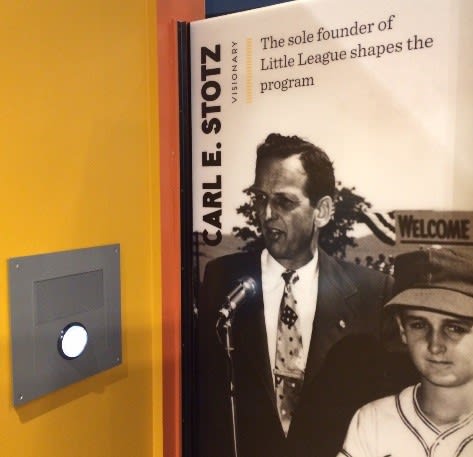
And I said to them, “How would you like to play on a regular team, with uniforms, a new ball for every game, and bats you could really swing?”
And then they started asking me questions, “Who would we play? Will people come to watch us?”
I wanted to see what size the diamond should be. I took folded newspapers, which I could lay down so that when the batter hit the ball and ran for first, it would be a close play there. After I thought it was working about right, I stepped it off and measured it, and it was close to sixty feet—that made it sixty feet.
So in the next spring, I went to St. John’s Lutheran Church and made an announcement for any of the boys that wanted to try out for a baseball league should see me between Sunday School and church.
First-year Little League® player Thomas “Tuck” Frazier explains what it was like before Little League® came along, and recalls the 1939 season.
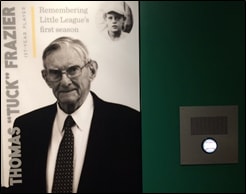
Hi, I’m Tuck Frazier. I played shortstop for Carl Stotz the first two years of Little League.
We played baseball before Carl. Well, it was all pick-up games because that’s about the only thing you could do when you’re a kid in the summertime. And we used to get Chinese rockets, so they called them, and you hit them about twice and the cover was off of them. So, really, the baseballs we played with were wrapped in friction tape. And, so, playing with new balls, that was the thing. We very seldom had a new ball.
One time Carl came to our Sunday school class and said to us guys, “Would you guys like to play in a league, have uniforms? We’ll furnish a new ball every game and people will come to see you play.”
Well, we jumped at it like a bobcat.
And, I was eleven years old when I played the first year. I played for Lycoming Dairy. We all lived around Bowman Field, which was very close to where the original Little League is today.
We got our suits. Our mothers had to sew the emblems on the first year and we had a new ball every game. I was lucky, just being in the right spot at the right time.
That was really some opportunity. We all had a good time. We all knew one another. It was competitive and we loved to play baseball.
Dr. Creighton Hale, inventor of several sports safety innovations, and former President and Chief Executive Officer of Little League Baseball®, explains how he pioneered the testing of batting helmets.

My name is Creighton Hale. In 1954, I was Associate Professor of Physiology, and part of my work was research on sports helmets. There was no test method for baseball helmets. There were no instruments in which to duplicate the impact of a baseball, and this is where the cannon came in.
It was sort of a Rube Goldberg machine, consisting of a barrel — behind that a solenoid which opens the chamber where the compressed air is kept. And at the end of the chamber is a gauge which shows the amount of pressure in the chamber of the compressed air. The only thing left to do is to calibrate the gauge so you know how fast the ball is coming out of the barrel. And then the ball is propelled against the helmet, which is placed on a wooden head model.
We took high-speed photography because the human eye cannot see the immediate impact. And now in every laboratory that tests baseball helmets, they use that same test method.
Maria Pepe of New Jersey explains her role in the struggle to allow girls to play Little League®.
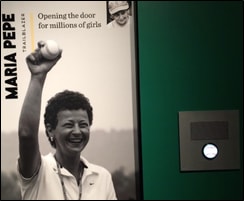
When I was a young girl people would say, “What do you want to be when you grow up?”
I used to answer, “I want to be a Yankee.”
I think the day that I was given the permission to have the tryouts for the Hoboken Young Democrats, that was probably the most exciting moment because I knew I was going to make the team and I was just so looking forward to having a uniform.
Not everyone realized that I was a girl. My hair was short so you just a couple small curls hanging out of my baseball cap. It took a little while into that first game before some of the other coaches were saying, “Hey, wait a minute, Jimmy’s got a girl on the team. The rulebook says girls aren’t allowed to play.”
And my coach Jimmy Farina tried to argue with the coaches and say, “Look, Maria’s just as good as the boys.”
Little League issued a letter to the town. “If you don’t remove Maria, we’re going to take the charter away from Hoboken.” The National Organization for Women had read about the story and was fuming at the fact that they let me off the team and so that’s when they filed the suit against Little League with the New Jersey Division on Civil Rights claiming that I was being discriminated against because I was a girl.
Thank God for Judge Sylvia Pressler, because she had the wisdom. What she read in her decision was that the institution of Little League is as American as the hot dog and apple pie and there’s not a reason why that part of Americana should be withheld from girls.
It was the thirtieth anniversary of the ruling, I remember them asking, “Would you mind going down, Dr. Creighton Hale would like to meet you.”
He shook my hand, he looked at me and he said, you know, “I just want you to know my granddaughter plays.”
That’s my gift, is that I get to see so many girls actually enjoying it and participating and not being discriminated for it but actually being encouraged to grow in the sport.
Third Inning
Connections Gallery
Philanthropist and Little League® supporter Edward Piszek talks about bringing Little League to Poland.
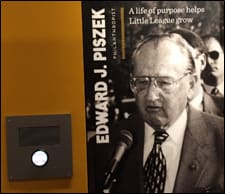
The Olympic committee announced that baseball would be an Olympic sport. And there were rumors in the United States that Castro was going to teach the Russians how to play baseball. And so Stan Musial and Moe Drabowski, they talked me into coming and seeing what we could do to come help Poland be able to play excellent baseball.
Stan was very impressed the way the Little Leagues were preceding around the world, the good they were doing for baseball. So, he brought me to the Little Leagues and introduced me. And that’s when we start deciding where in Poland was the Little Leagues going to locate. They decided on Kutno.
Volunteers Dwight and Iris Raiford explain how Little League® began in Harlem, New York.
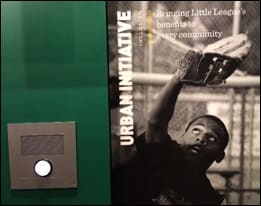
Iris: Hi, I’m Iris Raiford.
Dwight: And I’m Dwight Raiford.
Iris: And we founded Harlem Little League…
Dwight: …in 1989. We founded it primarily because of our son Joshua who was just turning eight at that time, who wanted to play baseball and found out his friends in school were playing in a league downtown and came home and asked us to sign him up.
Iris: We struck a deal. We said, “If you practice your piano, we’ll start a Little League.” And Josh kept his end of the deal and so did we. There was really some real middle class values here, and you saw that with parents volunteering, helping their children. I do know when kids make a connection and they feel good about themselves, can’t be beat. And I think Little League has provided that for us.
Dwight: You have to have a reason to connect with people and kids don’t go to neighborhood schools, they go all over the city for school, so they don’t necessarily connect with people in their neighborhood. But through Little League, they connect. And it’s just been amazing for us to watch that.
Iris: What’s been very exciting for us is to see former Little League players who’ve graduated from college who are now coming back as coaches and managers.
Little League® Challenger Division volunteers explain the benefits their families, and their communities, have received from having the Challenger Division.
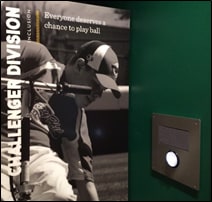
Angela: Challenger is a division of Little League for kids that are mentally or physically handicapped.
Terry: These kids enrich our lives and the lives of their parent’s every day. Little League has included these kids and given our family the opportunity to reach out to the community. So, Little League has served us by helping our family and giving us an activity that we can do together and really enjoy, but it’s also given a great opportunity for us to share our kids and the joy they bring to our lives with other people.
Angela: If you’re in a wheelchair and you can’t bend over to pick up the ball you’ll have a buddy with you who will pick up the ball and hand it to you and show you where to throw it. Just being your best friend out on that baseball field so that you have the greatest experience possible. J.D. has been playing Challenger since he was five year old. And, we didn’t have the program in our area so my husband and I started the Challenger program for Michigan District One and we’ve been running it ever since. We don’t play in outs and runs. We just let them all play, we do lots of goofing off on the field but that’s all part of it for these kids. It’s just to go out and have fun, just to forget that you are different for a little while.
Nick: We both were in tears that first day we were there because our Daniel had never been included in anything. And, when we went there without knowing anyone we were suddenly famous and popular, and loved and cared for.
Fourth Inning
In The Game Gallery
Umpire Chet Cooper speaks about how he started umpiring in Little League®, and continues to volunteer.
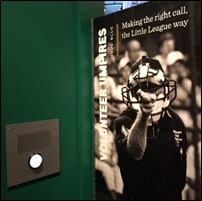
My name’s Chet Cooper, I’m from Canfield, Ohio. I umpire back in my Little League district and I am actually the Umpire in Chief for the entire district.
When my son was eleven years old, he was playing in a Little League game and I was sitting with the parents and eventually a coach came by and said, “We need a volunteer umpire for today.” And so I immediately shot up my hand and got down on the field and ever since then it’s just been magical.
And being an umpire, you just, you know, it reminds you so much of your own childhood, when you felt the same way. You get to interact with the kids and you get to relive your childhood to some degree as well.
I see my job as an umpire as to serve as a role model and to interact with the young players the way that I would like to be interacted with. To be friendly with them, to joke with them, to make them realize it’s just a game, try your best. If you don’t succeed, that’s okay, tomorrow is another day. It’s the trying that counts.
I will continue to umpire until I drop on the field.
Fifth Inning
World Series Gallery
Jose “Pepe” Maiz Garcia speaks about his experiences as a member of the 1957 team from Monterrey, Mexico, that became the first non-U.S. team to win the Little League Baseball® World Series.
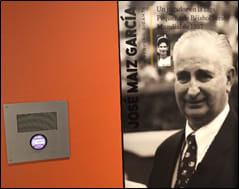
Hello. I am Jose Maiz Garcia. In 1957 we won twenty games – the All-Star games.
They told us that we were going to… We went to Reynosa. Of course we were walking, carrying all the bats and everything in our hands. Also, our luggage. And after we crossed the bridge we start asking for rides to the small hotel where we were going to be.
We played the first game finally against Mexico City, and we beat them 9-2. Then we followed playing there, four games more. They started cheering for us because we were littler, skinnier, than the American boys.
We had no money; sometimes we would eat just two times a day.
And we won the five games. Once we won the tournament, we had the right to be in Williamsport, Pennsylvania.
Baseball Hall of Famer Cy Young records his impressions from the 1954 Little League Baseball® World Series.
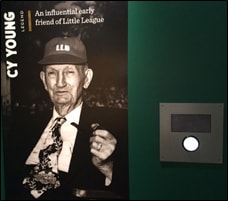
I think that this Little League is one of the grandest things that’s come about for years. …Lots of townspeople with their boys and they just think this is one grand thing.
So, in my estimation, I think, this is one grand move and in fifteen to twenty years, you will see some of these youngsters up in the majors. We’ve got to wait and see and I think they’re on the right track.
Taylor Harbin, who went on to play baseball professionally, speaks about playing in the Big League Baseball World Series.

Hi. My name is Taylor Harbin, and I was one of the back to back Big League World Series Championship South Carolina District One team in 2003 and 2004.
My best memory of playing in the Big League World Series, apart from hoisting the Big League banner with my teammates as champions, was being able to meet and hang out with kids my age from all over the world that shared my love for the great game of baseball.
These are memories that I will carry with me forever, along with all the friendships that will never be forgotten.
Heather Tarr, Head Softball Coach at the University of Washington, speaks about winning the Big League Softball World Series.
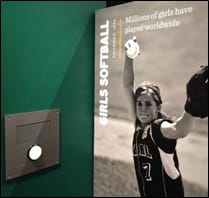
Hi. My name is Heather Tarr and I am the head softball coach at the University of Washington. And I played in the Big League World Series in 1993.
It was such a great experience because of all the structure that Little League put behind the event so that we could just compete and have fun and become World Series champions.
John Bailey’s team was prevented in 1955 from playing in the tournaments that lead up to the Little League Baseball® World Series because of race, and he explains how that affected him and his teammates.
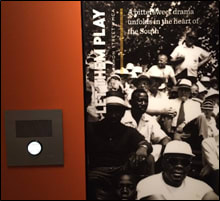
Narrator Karl Ravech: In 1955, the other leagues in South Carolina, all white at the time, refused to play the all black Cannon Street YMCA Little League team in the local and state tournaments. Little League Headquarters barred the white leagues from playing, and many of them left Little League to form another program. As a consolation, Little League then brought the Cannon Street team to Williamsport as its guests for the World Series. Here is John Bailey, a member of the team, in an interview with NPR:
John Bailey: When I look and try to define what happened to us, we missed an opportunity, but America missed an opportunity. Some of us may have had potential to go on to play professional baseball and some of us had desires to do that. But I guess, with having seen the system just beat you down.
Reporter: That didn’t happen.
John Bailey: All the hopes and dreams were destroyed. There was no possibility for any of us to go through this system at the time. You know, to make it happen.
Sixth Inning
Hall of Excellence Gallery
Little Leaguers® say what they want to be when they become adults. One of three versions is played each time the ball is pressed.
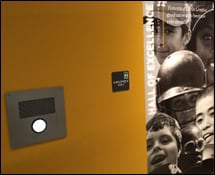
Version A:
- When I grow up, I want to be an engineer.
- Web designer or movie director.
- A teacher, and then an engineer.
- I want to be a soldier.
- I want to be a Major League Baseball player, and if I don’t make it there, I’ll go to Minor League.
- A movie star, I want to be a movie star.
- I really want to be a scientist.
- I think I was probably going to get my teaching degree.
- Marine biologist.
- Whenever I grow up, I would love to be a professional soccer player.
- I want to be President of the United States.
Version B:
- What I want to do when I am older is, I want to play football.
- I want to be an astronaut.
- I want to go to college, be a baseball player.
- And when I grow up, I want to be a unicorn. But physically, it’s not possible, so I would like to be a professional surfer.
- I’ve always wanted to be a firefighter.
- I want to be a filmer or photographer.
- When I grow up, I want to be a mechanic.
- I want to be a sports commentator for Baseball Tonight.
- Be a veterinarian.
- Maybe like a gym teacher.
- When I grow up, I want to be a chef, or sous chef – somewhere along the lines of culinary arts.
Version C:
- When I grow up, I want to be a Major League Baseball player, or in the Air Force.
- I want to be a doctor.
- I want to be an actuary.
- I want to be a marine biologist.
- When I grow up, I want to be a police officer.
- Rock star.
- I want to be a basketball player.
- I want to go to culinary school.
- I love animals, I want to be a veterinarian.
- A job? I haven’t thought about it that much.
- I want to be a scientist.
- I just want to be a math teacher.
- A doctor.